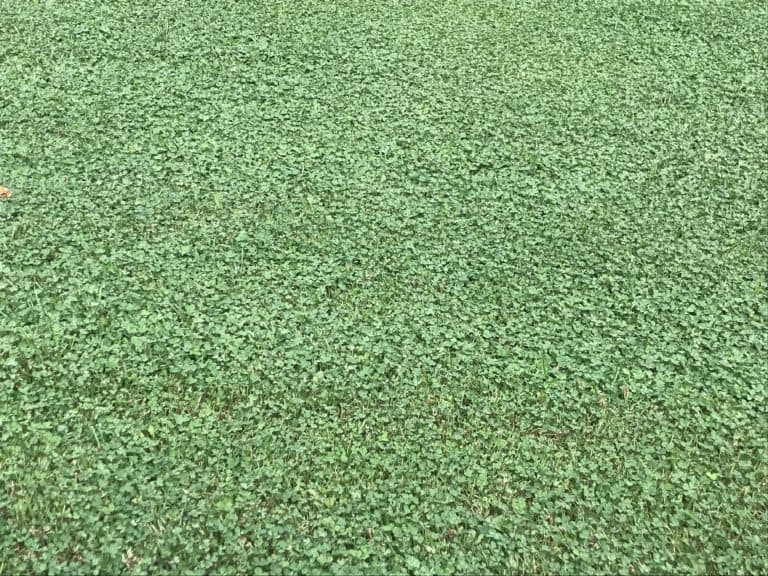Instead of going with a traditional, water hungry Kentucky Bluegrass-heavy lawn, we decided to try out a mixture of microclover with a hardier grass mixture. We could find no information at all about its use in Southern Alberta…so it’s really a guessing game as to whether it works out!
Here we will discuss pros and cons of a microclover mix lawn, and our experience with it so far in this first growing season.
Pros of Microclover Mix Lawn
Lower Water Usage
When we first seeded the areas, we of course needed to water regularly to keep the seeds and top soil moist for germination. However, once our lawn was established and growing well, it became so lush and thick that it really keeps the moisture in well.
Not only that, but clover roots dig deep and that really helps the plants when the top layer of soil gets dried out.
A couple of times after not watering for a couple of weeks, I would notice that the areas which really bake in the summer sun would be looking a little sad and wilty. After a brief sprinkler watering, it was good as new!
Exceptional Green Color
Microclover appears significantly more green than traditional lawns. Close up, you can of course tell that it’s not usual lawn because the clover has small leaves rather than just blades of grass, but from even a small distance it just looks like a lovely, uniformly green lawn.
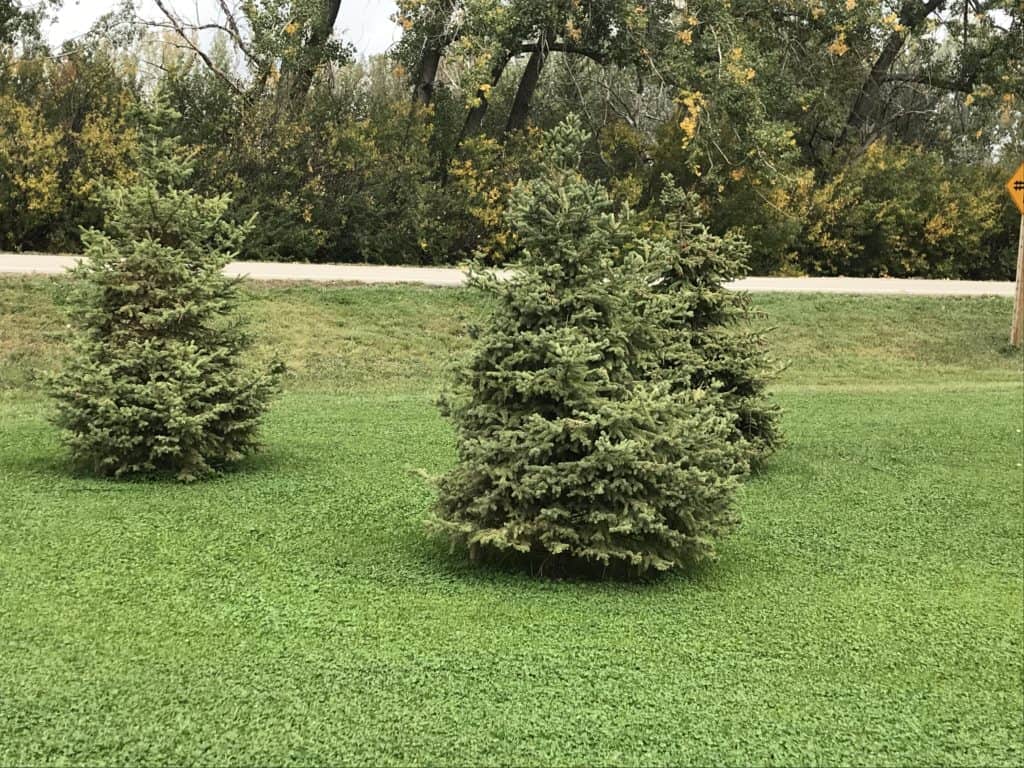
You can see on the above photo that the ditch is just grass and it looks a lot less green than does the lawn. It’s watered equally as much. (Ps. that is a straight-out-of-the-phone-camera photo, not brightened, nothing. It’s really that vibrant!!)
Attracts Bees & Butterflies
As you likely are aware, clover is a bee magnet. We’ve also noticed many different types of butterflies frequenting our lawn throughout the summer. I am absolutely trying to attract a lot of insects and wildlife to this yard…so I love to see the insects enjoying the lawn!
Outcompetes Weeds
Our front yard was a VERY weedy area, which we didn’t want to spray. At first when we seeded the area, I was quite worried that the weeds would simply take over. However, as you can see on the photos, the clover is definitely outcompeting the weeds! It’s pretty awesome!
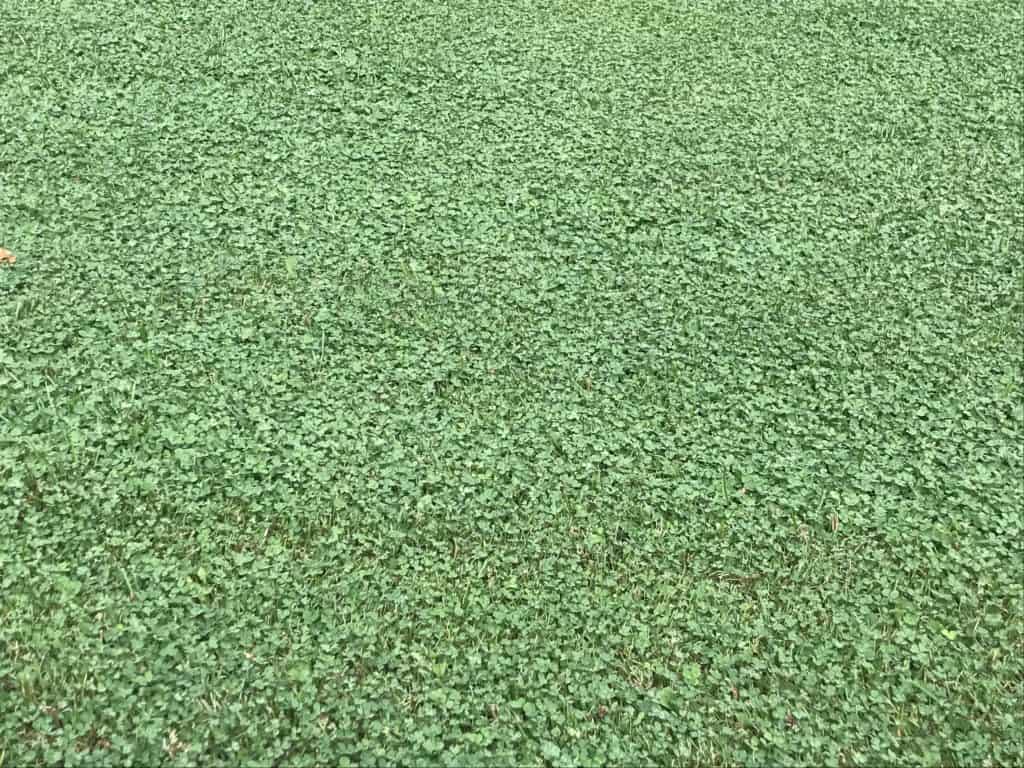
Nitrogen Fixer
Clover is a nitrogen fixer, which basically means it naturally fertilizes the soil. I am really against fertilizer use (read more about that here), so I love this about microclover.
Cons of Microclover Mix Lawn
Slippery When Wet
Yep, it’s pretty slippery stuff! Now, some of our clover is on a fairly steep hill so that definitely complicates matters. But there’s definitely a slicker feel to clover when wet that is different from traditional lawn grass.
Visible Tracks
Sometimes after mowing or even just walking on the lawn, visible tracks are left. It’s not a big deal, but something that is different from plain grass which just springs back up like you were never there.
Attracts Bees
This is a pro…but also a con! Bees love clover and will visit any flower that blooms. It’s wiser to wear shoes when walking on a clover lawn. Although, to be honest…our family and visitors mostly didn’t wear shoes on the lawn this summer and there was nary a sting to be had!
But let’s say you have a family member who has a life threatening allergy to bee stings…you’d probably be wise not to plant a clover lawn.
Expensive
Yes, it costs much more than regular grass seed per pound. Keep in mind though, that the seeds are much more tiny so there is a lot more seed per pound.
Also, once the seed germinates, the plants spread quickly to fill the area.
I think we could have done with seeding our areas a lot less thickly and it would have been just fine as well. Continue reading for details regarding how much seed we purchased, for how much area.
Some Issues We Had
Bad soil! We unfortunately have had to deal with a lot of bad soil on our acreage. Certain areas just wouldn’t grow anything at all.
We tried reseeding a time or two, but then gave in and ordered a load of topsoil to spread in these areas first. Now they are finally growing some grass (we had run out of clover seed meanwhile, so you can see in the below photo that it’s just grass seed in those areas. We expect the clover to fill it in soon though…)
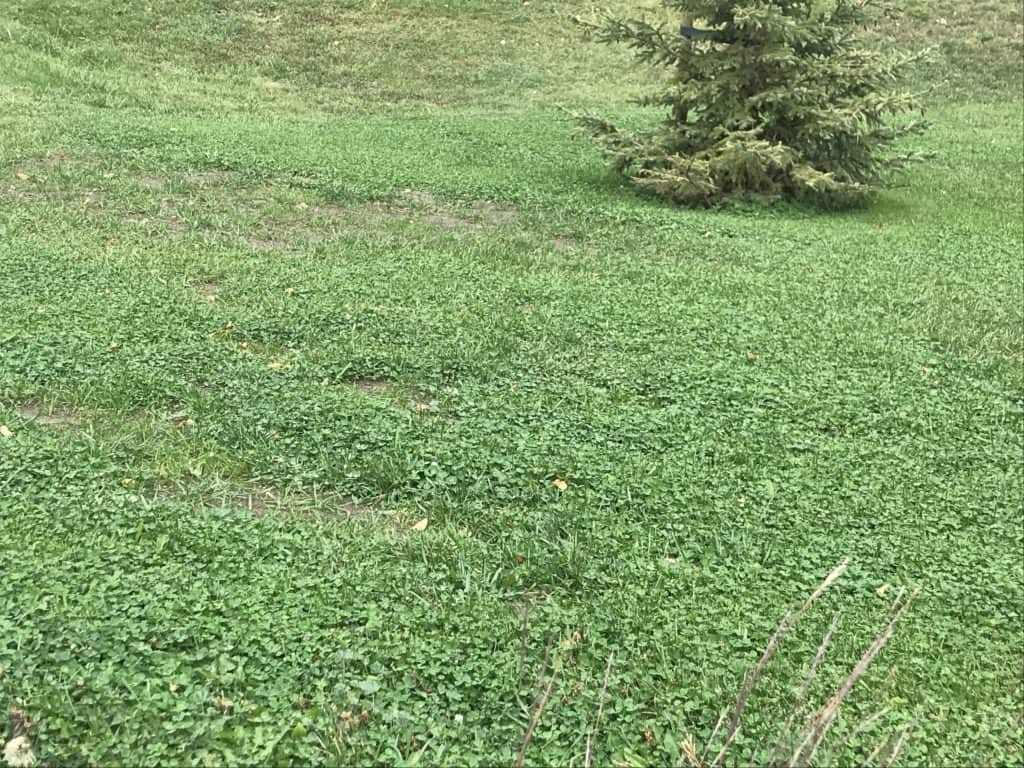
Where to Buy
Microclover Seed
We purchased microclover seeds from West Coast Seeds in BC. We ordered 2.5 kg and spread it over two different areas, approximately 50×100 feet and 30×30 feet. They are super tiny seeds and it’s actually kind of difficult to spread them thinly enough! We purchased a basic seed spreader for about $22.
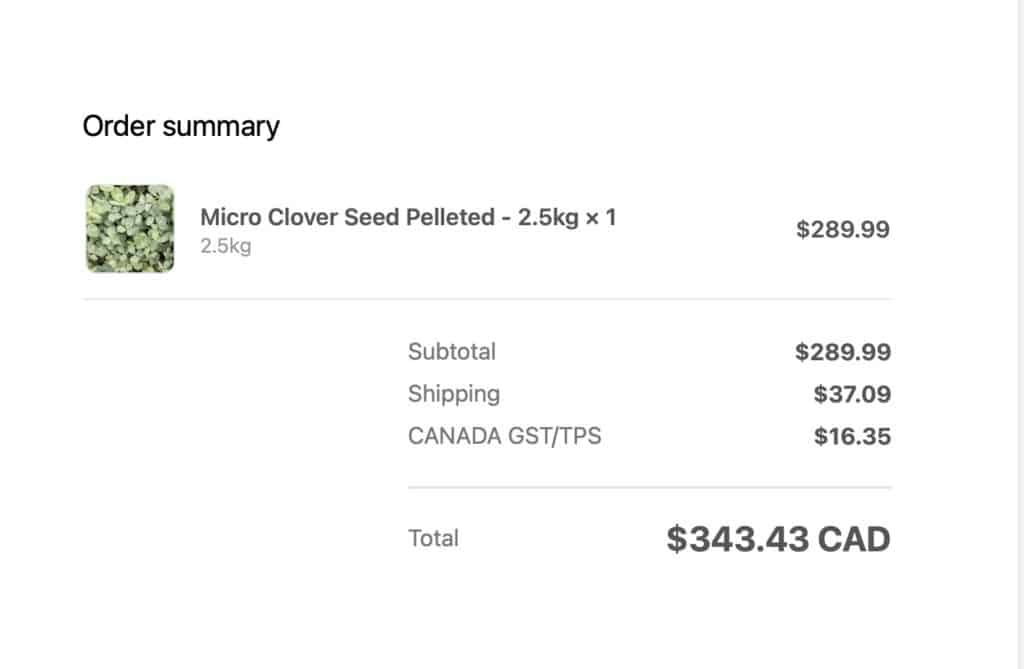
Grass Seed
We also purchased the “Playground Mix” from Gold Medal Seeds in Brooks, Alberta. (That’s also where I purchased seed for the swale.)
It consists of the following grass types, and the price is per pound of seed mixture:
| 20% | Sheeps Fescue | $ 4.46 |
| 20% | Tall Fescue | |
| 20% | Hard Fescue | |
| 15% | Creeping Red Fescue | |
| 15% | Kentucky Bluegrass | |
| 10% | Perennial Ryegrass |
We ordered 65 lbs, which, including tax, brought the total to just over $300. That was more than enough seed, and we still have a good amount extra stored in the garage. And this is after reseeding a few areas 2-3 times due to the above-mentioned issue of poor soil.
But I thought you were a NATIVE plant grower?!
Honestly, that’s something that made me not want to post about this lawn. Microclover is not native, and many lawn traditionalists hate having clover in their lawn.
But because I’m not the only person in this house and family, compromises have to be made. Additionally, I simply am not able to transition this entire yard to a perfectly native landscape by myself all at once.
Also, there is a shop on our plan that has yet to be built (and may not be built for many years, if ever). That area couldn’t stay dirt and/or weeds indefinitely…
With these disclaimers and the above pros, I am content with this…for now ;). Eventually, yes, I would definitely like to transition much of this to a native grass/flower mixture similar to our swale.
Results
We are so happy this year with the results of our seed mixture. The clover has filled in incredibly well, and our lawn looks lush and beautiful still today, on the last day of September. We have only had a couple of nights of frost so far, so I’m curious how it will look after some solid freezing temperatures.
Next year I will do an update once I’ve seen how the lawn overwintered and whether I can still recommend this type of lawn for Southern Alberta yards!
Happy Gardening!

